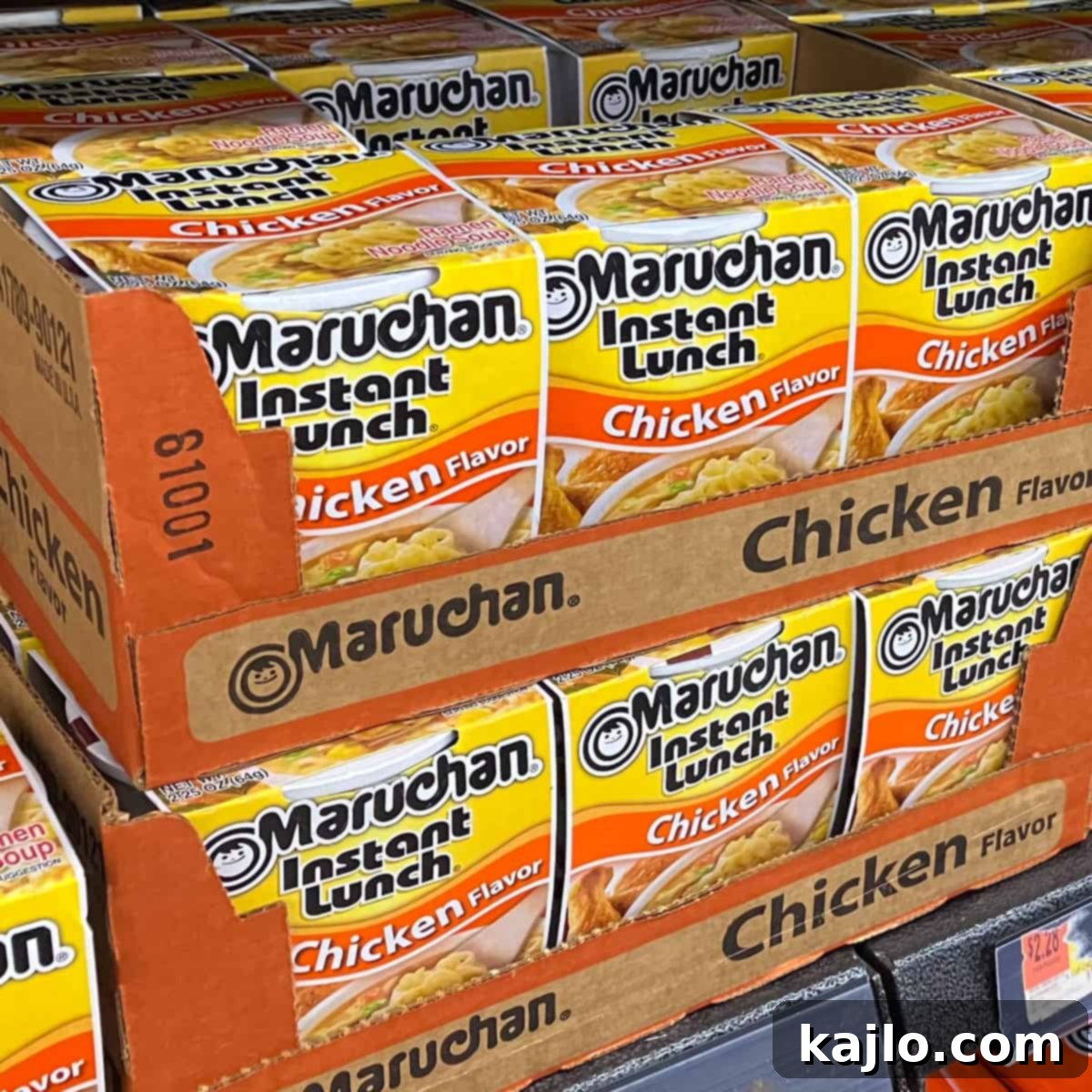Can you microwave cup noodles? This seemingly simple question often leads to confusion and conflicting advice. While the convenience of instant noodles makes them a go-to meal for many, understanding the proper and safe way to prepare them in a microwave is crucial. Historically, most cup noodle containers, often made of styrofoam, were not microwave-safe, posing potential health risks. However, the landscape is changing, with major brands like Nissin transitioning to microwavable paper cups. This guide will clarify when you *can* microwave cup noodles, when you absolutely *shouldn’t*, and the safest methods to enjoy your favorite instant ramen.
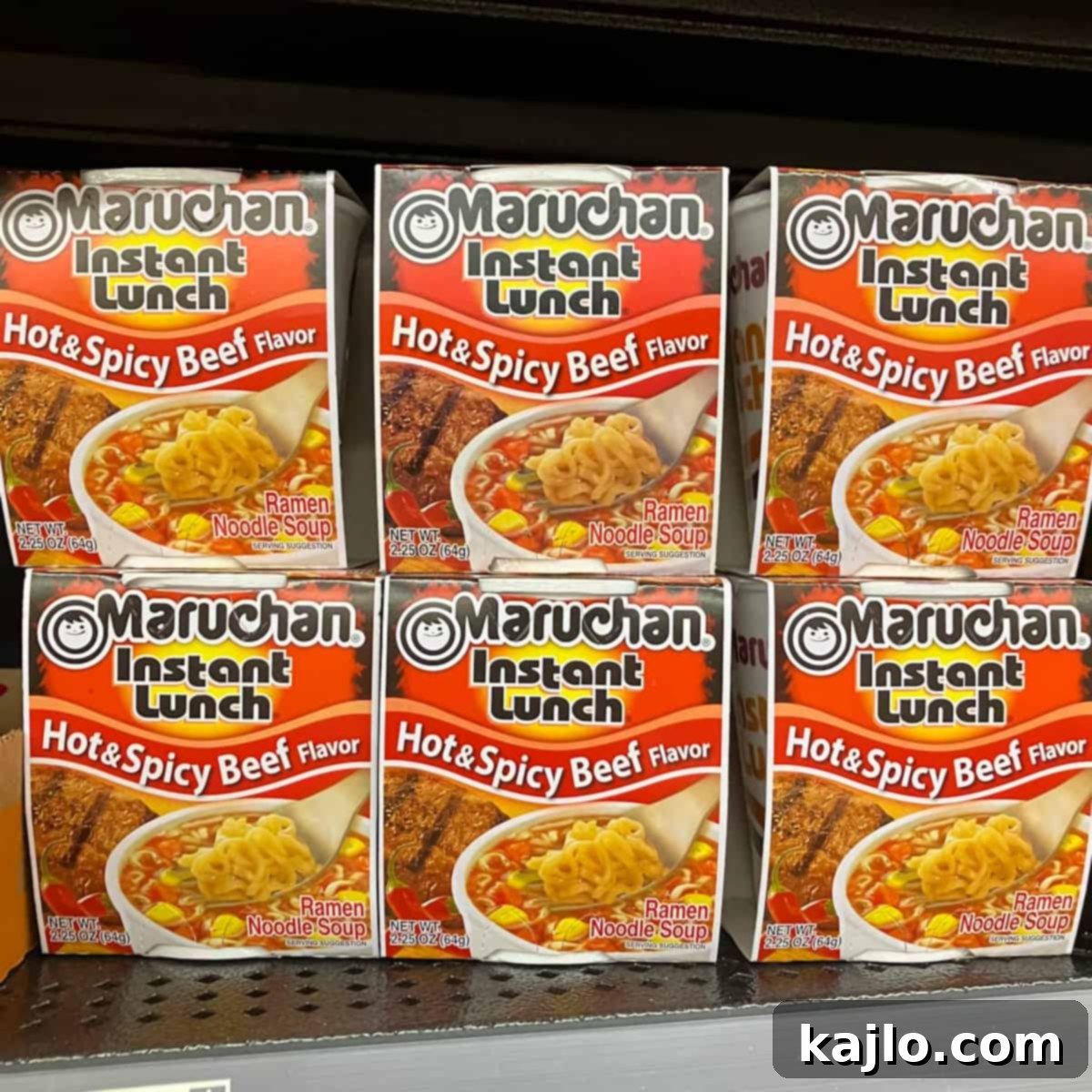
Understanding Microwave Safety for Cup Noodles
The ability to microwave cup noodles hinges entirely on the material of the cup itself. Many traditional instant noodle cups are made from polystyrene foam, commonly known as styrofoam. While styrofoam is generally safe for holding hot liquids like freshly boiled water, it is not designed to withstand the direct, intense heat generated by a microwave. Microwaving these cups can cause the material to degrade, potentially leaching harmful chemicals into your food.
The golden rule for preparing cup noodles is to always check the label. Manufacturers clearly indicate whether their product’s packaging is microwave-safe. If the label explicitly states “do not microwave” or provides instructions for adding pre-boiled water, then it’s essential to follow those directions to ensure both safety and the quality of your meal. Ignoring these warnings can lead to a less enjoyable experience and, more importantly, potential health concerns.
Why Can’t You Microwave Most Foam Cups?
Most foam cups, particularly those made of polystyrene (styrofoam), are not microwave-safe due to their chemical composition and structural integrity under high heat. When exposed to microwave radiation, the plastic polymers in styrofoam can begin to break down. This degradation can lead to several problems:
- Chemical Leaching: Styrofoam contains styrene, a chemical that is a suspected carcinogen. When styrofoam heats up significantly in a microwave, especially when in contact with hot liquids or oily foods (which instant noodles often are, due to the pre-cooked noodles being fried), styrene can leach into your food. While the amount may be small, repeated exposure is best avoided.
- Structural Weakness: The heat from a microwave can soften and weaken the foam structure. This could cause the cup to warp, melt, or even break apart, leading to spills of hot liquid and a messy, potentially dangerous situation.
- Uneven Heating: Microwaves heat water molecules. If the container itself isn’t designed for microwave use, it may heat unevenly, leading to “hot spots” in your soup and potentially superheating the liquid, which can cause sudden boiling or splashing when disturbed.
Therefore, to avoid these risks, manufacturers typically advise against microwaving the cup directly. Instead, they recommend heating water separately to boiling, then pouring it into the cup to steep the noodles.
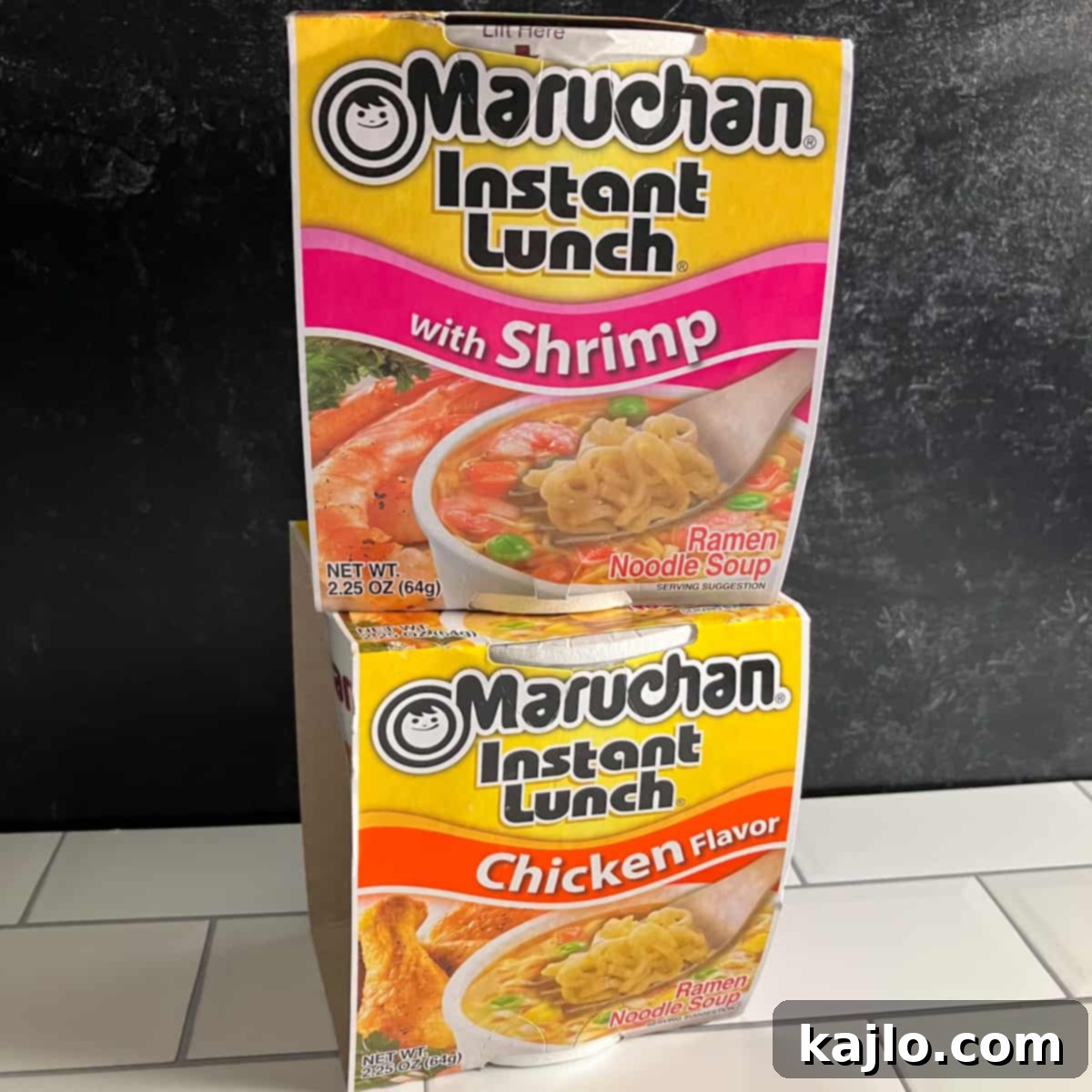
Brands and Microwaveability: What You Need to Know
While the general rule is to be cautious, some brands are innovating. It’s crucial to differentiate between brands and even specific product lines within a brand, as their packaging materials can vary. Always make it a habit to read the instructions on your specific cup of noodles before microwaving.
Nissin Cup Noodles: A Game Changer
Historically, many Nissin Cup Noodles were not microwave-safe. However, Nissin Foods announced a significant change: starting in 2024, all flavors of Nissin Cup Noodles in the US market will transition to new microwave-safe paper cups. This is a fantastic development for convenience-seekers, as it eliminates the need to heat water separately. This move reflects a growing consumer demand for easier preparation methods and a commitment to safety.
Prior to this change, Nissin did offer some specific products, like certain “stir fry” or “bowl” varieties, that were designed for microwave use. For example, Nissin Teriyaki Chicken Stir Fry Noodles are often explicitly labeled as microwavable. If you have an older Nissin Cup Noodle, or one not yet in the new paper cup packaging, always check the label. If it’s not the new paper cup, assume it’s not microwave-safe unless otherwise stated.
Maruchan Cup Noodles: Check the Product Type
Maruchan is another popular instant noodle brand. Their flagship “Instant Lunch” cup noodles typically come in styrofoam cups and are generally not microwave-safe. The instructions for Maruchan Instant Lunch usually advise heating water separately and pouring it into the cup. Microwaving these cups directly is not recommended for the reasons discussed above (potential chemical leaching and structural damage).
However, Maruchan also produces “Ramen Bowls” which are often designed with microwave-safe packaging. These bowls usually have a different material composition than the Instant Lunch cups and will clearly state “microwavable” on the packaging. If you’re buying Maruchan, pay close attention to whether you have a “cup” or a “bowl” and, most importantly, check the specific cooking instructions.
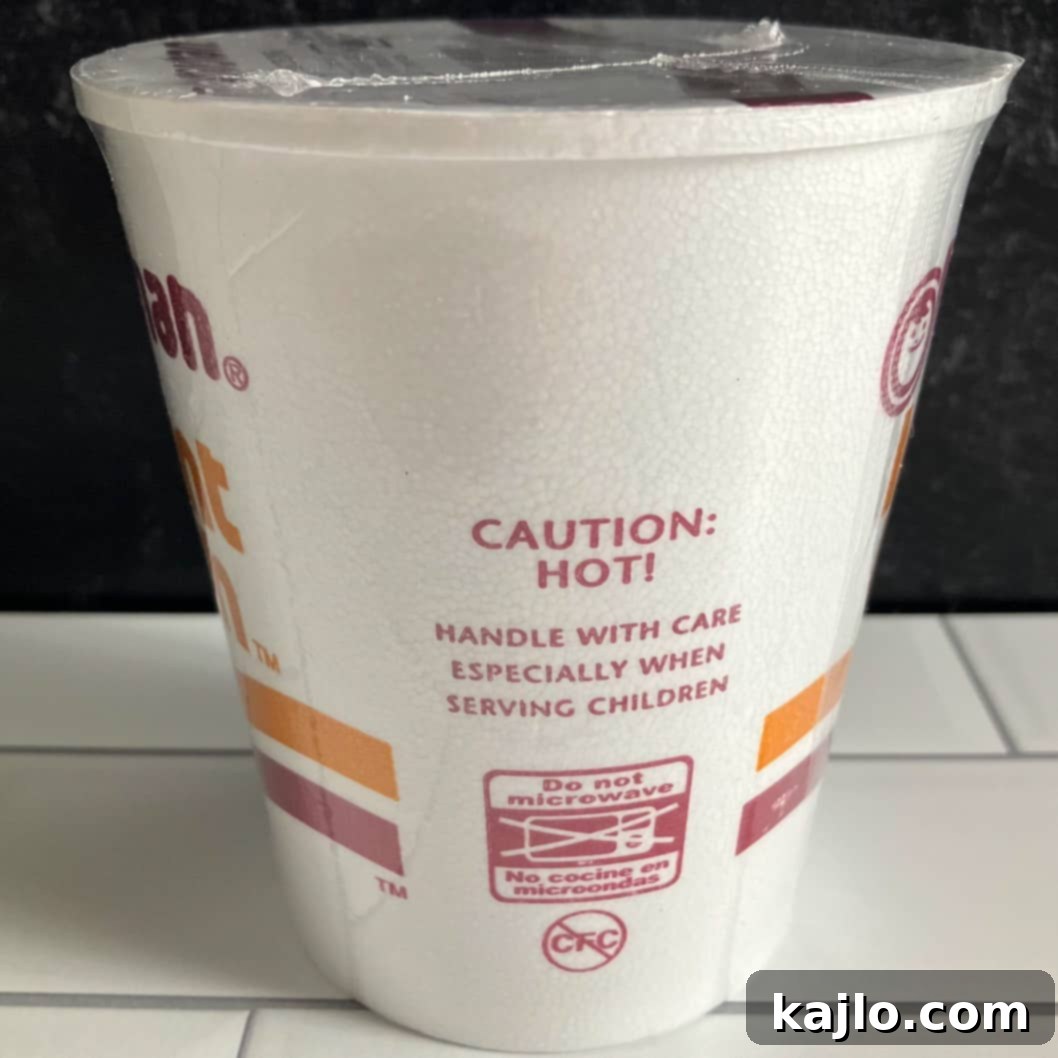
Maggi, Samyang, and Top Ramen
- Maggi Cup Noodles: Similar to most traditional brands, Maggi cup noodles typically come in containers that are not meant for microwaving. The standard preparation method involves adding hot water from an external source.
- Samyang Cup Noodles: Known for their spicy varieties, Samyang cup noodles generally do not use microwave-safe containers. The recommended method is to pour boiling water up to the fill line and let the noodles steep for the directed time.
- Top Ramen: A brand under the Nissin umbrella, many of Top Ramen’s cup varieties also traditionally fall into the “do not microwave the cup” category. However, like other Nissin products, some Top Ramen “bowl” varieties might be microwave-safe. With Nissin’s 2024 change to paper cups, expect more Top Ramen cup noodles to become microwavable. Until then, always verify the specific product’s instructions. If you’re using Top Ramen bricks (without a cup), you can cook them in any microwave-safe bowl.
The recurring theme across all brands is the importance of reading the label. Packaging technology evolves, and what might not have been microwave-safe yesterday could be today, and vice-versa. When in doubt, err on the side of caution and use a separate microwave-safe container.
The Safe Way: How to Microwave Instant Noodles
Even if your cup noodle container isn’t microwave-safe, you can still leverage the convenience of your microwave to prepare your meal. The key is to heat the water separately in a microwave-safe vessel. Here’s a simple, step-by-step guide:

- Choose Your Container: Select a microwave-safe bowl or mug that is large enough to hold approximately 1.5 to 2 cups of water without overflowing. A mug with a handle is often ideal, as it makes pouring hot water safer and easier. Ensure there is no metallic trim or design on the container, as metal is unsafe for microwaves.
- Add Water: Pour the desired amount of water into your chosen microwave-safe container. The amount needed is typically indicated on the cup noodle packaging, usually around 1.5 to 2 cups.
- Heat the Water: Place the container of water in the microwave. Heat on high power until the water is very hot, almost boiling. For most microwaves, this takes approximately 2 minutes. The exact time can vary depending on your microwave’s wattage, so observe the water the first time to gauge the ideal duration. You want to see small bubbles forming at the bottom and sides of the container.
- Prepare the Noodle Cup: While the water is heating, peel back the lid of your cup noodles. Remove any seasoning packets or oil pouches that might be tucked inside (these are typically added after the hot water).
- Pour and Steep: Carefully remove the hot water from the microwave. Pour the hot water into the cup noodle container up to the designated fill line.
- Cover and Wait: Place the lid back onto the cup noodles, or cover the cup with a microwave-safe plate or lid if the original lid doesn’t seal well. Allow the noodles to steep for the time recommended on the package, usually 3 minutes. This allows the noodles to soften and absorb the broth.
- Season and Enjoy: After steeping, stir the noodles, add any seasoning or oil packets, and mix well. Your delicious and safely prepared cup noodles are now ready to eat!
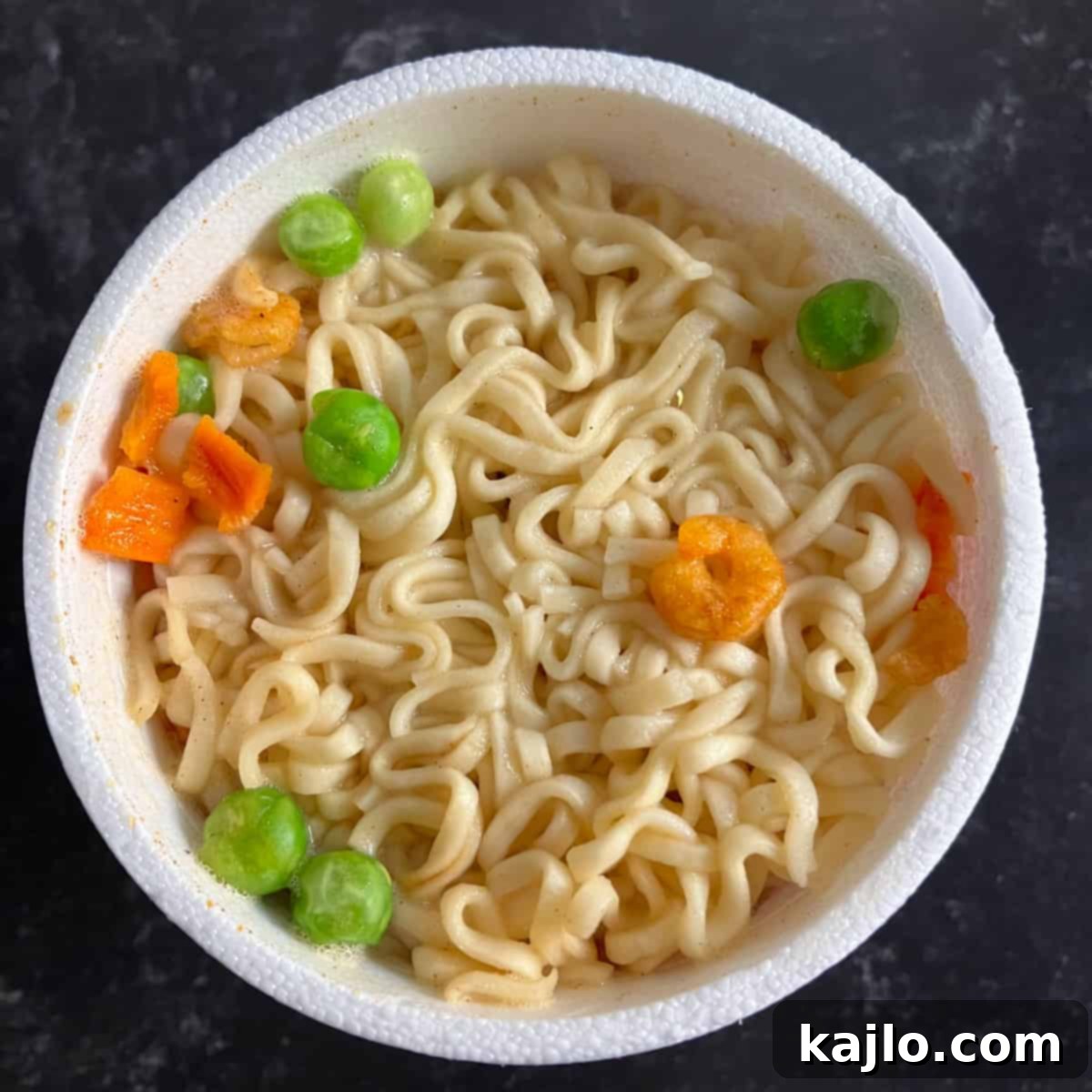
What if You Microwave Cup Noodles Without Water?
Microwaving cup noodles without water is a definite no-go. The noodles themselves are dehydrated and contain very little moisture. Without water to absorb the microwave energy, the noodles will quickly burn, potentially causing smoke and even fire. Furthermore, the empty cup (especially styrofoam) would be exposed to direct microwave energy, increasing the risk of melting, releasing chemicals, or even igniting. Always ensure there is sufficient water present when microwaving any food product, especially those in non-microwave-safe containers.
Nutritional Considerations of Instant Noodles
While convenient and tasty, it’s important to approach instant cup noodles with an understanding of their nutritional profile. They are generally considered an ultra-processed food and tend to be high in certain nutrients while lacking in others. A standard chicken flavor cup of noodles by a popular brand might contain approximately 400 calories, 56 grams of net carbohydrates, and 9 grams of protein per serving. Key nutritional aspects to consider include:
- High Sodium Content: One of the most significant nutritional drawbacks of instant noodles is their high sodium levels. A single cup can easily contain half or more of the recommended daily sodium intake. Excessive sodium can contribute to high blood pressure and other health issues.
- High in Carbohydrates and Fats: Instant noodles are primarily made from refined flour, making them carbohydrate-dense. Many are also pre-fried, contributing a notable amount of fat, including saturated fat.
- Low in Micronutrients and Fiber: Compared to a balanced meal, instant noodles are typically low in essential vitamins, minerals, and dietary fiber, which are crucial for digestive health and overall well-being.
- Moderate Protein: While they do offer some protein, the ratio of protein to carbohydrates and fats is often not ideal for satiety or muscle building.
For these reasons, instant cup noodles are best enjoyed in moderation as an occasional treat rather than a daily staple. If you’re managing weight, trying to reduce sodium intake, or aiming for a more nutrient-dense diet, integrating instant noodles frequently might not align with your goals. However, for a quick, budget-friendly meal, they serve their purpose when consumed thoughtfully.
Elevating Your Cup Noodles: Making Them “Really Good”
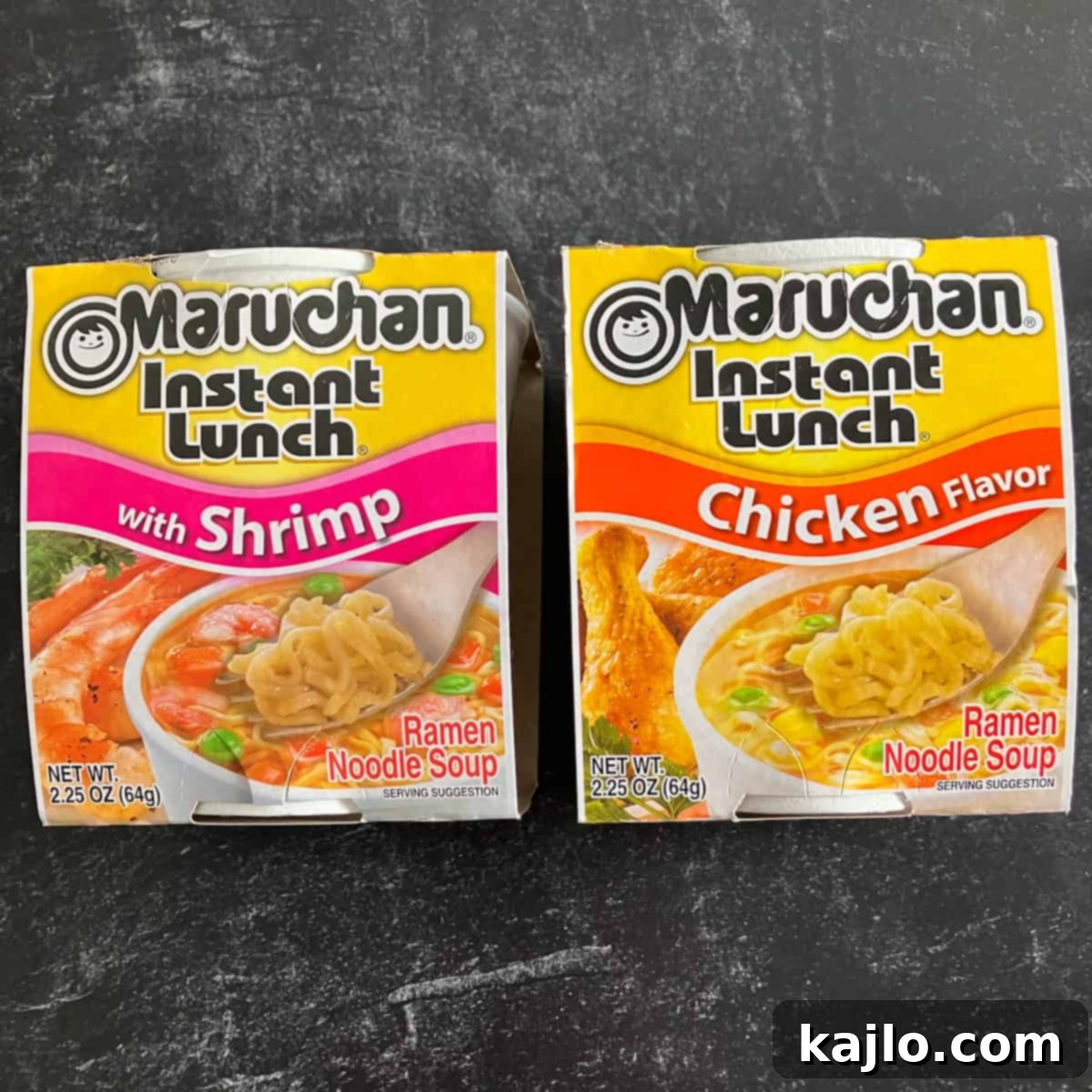
Instant noodles are a fantastic blank canvas for culinary creativity. With a few simple additions, you can transform a basic cup into a more flavorful, satisfying, and even more nutritious meal. Here are some ideas to make your instant cup noodles truly shine:
Flavor Boosters and Toppings
- Fresh Herbs: A sprinkle of chopped green onions (scallions), cilantro, or basil can add freshness and a vibrant aroma.
- Spices & Sauces: Elevate the flavor with a dash of hot sauce (Sriracha, chili oil), a splash of soy sauce or hoisin sauce, a squeeze of lemon or lime juice for brightness, or a pinch of ground ginger or garlic powder.
- Protein Power: Add cooked protein like a soft-boiled egg, shredded chicken (rotisserie chicken works great!), crumbled bacon, a few pieces of tofu, or even some leftover cooked beef.
- Vegetable Medley: Boost nutrition and texture by stirring in frozen peas and carrots, corn, chopped spinach, thinly sliced mushrooms, or bean sprouts. For heartier additions, consider thinly sliced bell peppers or cabbage, which will soften in the hot broth.
- Dairy & Richness: A dollop of cream cheese or a sprinkle of shredded cheese can add a creamy, savory element. A pat of butter can also enhance richness.
- Broth Enhancement: Instead of plain water, consider using low-sodium chicken or vegetable broth to cook your noodles for a deeper, richer base flavor.
Experiment with different combinations to discover your favorite pairings. These additions not only improve taste but can also make your instant noodles a more balanced and fulfilling meal.
Frequently Asked Questions About Microwaving Cup Noodles
How long should I microwave water for cup noodles?
For most microwaves, about 2 minutes on high power is sufficient to get 1.5 to 2 cups of water very hot, just shy of a rolling boil. Adjust the time based on your microwave’s wattage; a lower wattage might require an extra 30-60 seconds. The goal is piping hot water to properly steep the noodles.
Are cup noodles precooked?
Yes, the noodles in instant cups are typically precooked (usually by steaming and then frying) before being dehydrated and packaged. This is why they only require hot water to rehydrate and soften, rather than extended cooking.
Can I eat instant noodles without boiling water?
Technically, yes, you can eat instant noodles “raw” or without boiling water, as they are precooked. However, the texture will be hard and crunchy, and the flavoring will be very concentrated. Some people enjoy crushing them and adding them to salads or eating them as a crunchy snack, but it’s not the intended experience.
What kind of cups can you microwave?
Only use cups or bowls specifically labeled “microwave-safe.” Common examples include ceramic mugs (without metallic accents), glass bowls, and certain plastic containers designed for microwave use (look for the microwave-safe symbol, often wavy lines or a microwave oven graphic). Avoid metal, styrofoam (unless explicitly stated as new paper cups), and plastics not marked safe.
How do you heat up a cup of noodles without a microwave?
The most common and traditional method is to boil water in a kettle or a pot on a stovetop, then pour the boiling water into the cup noodle container. Allow it to steep for the recommended time. You can also use hot water from a coffee maker (ensure it’s clean and free of coffee grounds).
Do you drink the water in cup noodles?
Yes, the water you add to cup noodles is intended to become the broth, which is a flavorful and salty part of the meal. You do not typically drain the water; you eat the noodles immersed in the broth.
Choosing the Best Cup of Noodles
The “best” cup of noodles is subjective and depends heavily on individual preferences, including desired flavors, texture, and dietary considerations. However, if forced to recommend a brand for its innovation, variety, and widespread availability, Nissin often stands out. As the company founded by Momofuku Ando, the inventor of instant noodles, Nissin has a long history of perfecting and diversifying its products.
Nissin offers a vast array of flavors, from classic chicken and beef to more adventurous options like Korean BBQ or Thai Yellow Curry. Their ongoing transition to microwave-safe paper cups further enhances their appeal, blending tradition with modern convenience. Whether you prefer the comforting familiarity of a standard Cup Noodle or are keen to explore their newer Stir Fry varieties, Nissin provides a broad spectrum of choices that cater to different palates.
Other Microwave-Friendly Recipes
If you’re a fan of quick and easy microwave cooking, there’s a world of possibilities beyond cup noodles. Here are a few other microwave recipes to consider for busy days:
- Pancake in a Mug
- Grilled Cheese in Microwave
- Microwaveable Cauliflower Rice (e.g., from Costco)
- Microwave Vegetables
For more convenience, you might also enjoy exploring ready meals in an air fryer for quick and crispy results.

Simple Cup Noodle Preparation (General Guide)
This is a general guide for preparing most cup noodles, assuming a non-microwavable cup. Always refer to your specific product’s label for precise instructions.
Ingredients:
- 1 container cup noodles (e.g., Maruchan Instant Lunch, older Nissin)
- Approximately 2 cups of water
Equipment:
- Microwave-safe bowl or mug
- Microwave
Instructions:
- If the cup noodle container is NOT microwave-safe, pour 1.5 to 2 cups of water into a separate microwave-safe bowl or mug.
- Heat the water in the microwave on high power for about 2 minutes, or until it is very hot and nearly boiling.
- Carefully remove the hot water from the microwave.
- Peel back the lid of the cup noodles and pour the hot water into the cup up to the indicated fill line.
- Place the lid back on the cup and let the noodles steep for 3 minutes (or as directed on the packaging).
- Stir well and enjoy your cup noodles!
Nutrition Information (Example based on a standard chicken Top Ramen):
- Calories: 400 kcal
- Carbohydrates: 58g
- Protein: 9g
- Fat: 14g
- Saturated Fat: 7g
- Sodium: 1830mg
- Potassium: 280mg
- Fiber: 2g
- Added Sugar: 4g
- Calcium: 2% DV
- Iron: 20% DV
(Note: Nutrition information is an estimate and can vary significantly by brand and flavor. Always check the specific product’s label.)
Join our community! Subscribe for all of the latest and greatest recipes, and follow us on Facebook, Pinterest, Instagram, and YouTube!
